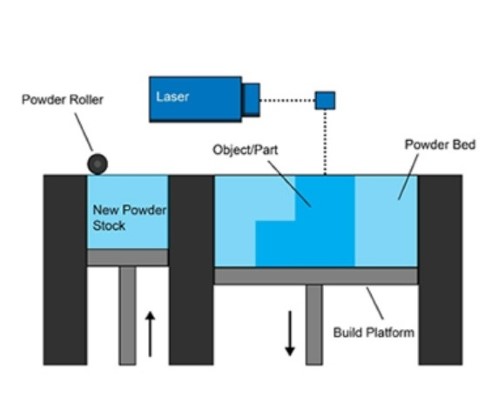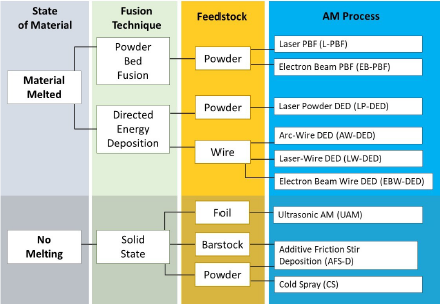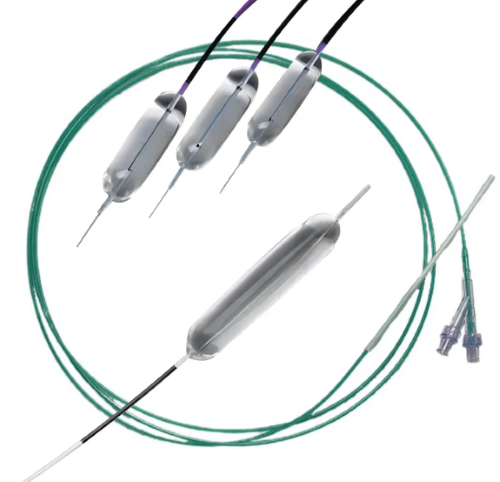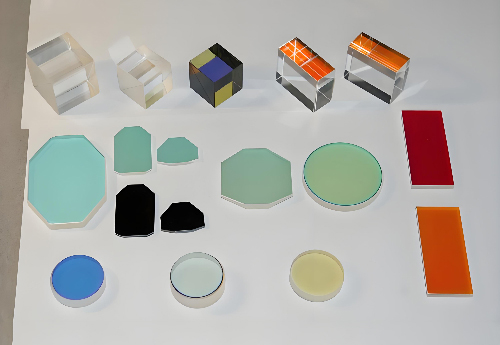A Comprehensive Guide to Powder Bed Fusion Technique
Powder Bed Fusion (PBF) is a revolutionary technique in additive manufacturing, offering a wide range of advantages over traditional methods. This guide explores the various aspects of PBF, its benefits, applications, and its impact on industries like aerospace, medical, and automotive.
Understanding Powder Bed Fusion
Powder Bed Fusion (PBF) is an AM technology that selectively fusing powdered materials to create solid objects. It utilizes heat sources like lasers or electron beams to melt or sinter the powder according to a digital model. In PBF (see Figure 1), a thin layer of powder is spread over a build platform, and a heat source, such as a laser or an electron beam, is used to selectively melt or sinter the powder according to a digital model. After each layer is completed, a new layer of powder is applied, and the process is repeated until the entire object is built.

Figure 1. Powder Bed Fusion Process
Types of Powder Bed Fusion
PBF can be divided into two common categories: Laser Powder Bed Fusion (L-PBF) and Electron Beam Powder Bed Fusion (EB-PBF). L-PBF is a category of PBF processes that utilizes a laser as the energy source to selectively fuse powdered materials and build objects layer by layer. While in EB-PBF, an electron beam is employed as the energy source to selectively melt and fuse powdered materials, typically metal powders, to create three-dimensional objects. Several other processes are employed in PBF. You can check the figure below for more information.

Figure 2. AM Process Options
Benefits of Powder Bed Fusion
As an advanced technique, PBF offers the following advantages compared with conventional approaches.
1. Complex Geometries: PBF processes excel at producing complex and intricate patterns that are difficult or impossible to manufacture using traditional methods. The layer-by-layer approach allows for the creation of parts with internal channels, lattice structures, and optimized designs for lightweighting.
2. Design Flexibility: Such a technique provides designers with significant design freedom, enabling the production of highly customized and tailored parts. It also allows for the integration of multiple components into a single part, reducing assembly requirements and potential points of failure.
3. Material Versatility: PBF processes work with a wide range of materials, including metals, polymers, and ceramics. This versatility allows for the production of parts with diverse mechanical, thermal, and chemical properties, expanding the possibilities for various applications.
4. Reduced Material Waste: This technique is highly efficient in material usage. Only the necessary amount of powder is used to build the part, resulting in minimal waste compared to traditional manufacturing methods. This leads to cost savings and reduced environmental impact as well.
5. Customization and Personalization: PBF processes allow for easy customization and personalization of parts, making it possible to produce unique, one-of-a-kind components. This is particularly beneficial in medical and dental applications, where patient-specific implants or prosthetics can be created.
Applications of Powder Bed Fusion
With these benefits, Powder bed fusion finds applications in a wide range of industries. Here are some of its notable applications.
1. Aerospace: PBF processes are extensively used in the aerospace industry for producing lightweight, complex, and high-performance parts. An example is the PBF-manufactured fuel nozzle for General Electric's GE9X engine used in the Boeing 777 aircraft. You can also find components using the PBF process such as turbine blades, structural brackets, and heat exchangers, which allows for weight reduction, improved fuel efficiency, and optimized designs.
2. Medical and Dental: PBF has made significant contributions to the medical and dental fields. It enables the production of custom implants, prosthetics, surgical guides, and patient-specific medical devices. The ability to create complex and tailored geometries ensures a better fit, functionality, and patient comfort.
3. Automotive: PBF is used to manufacture functional prototypes, tooling, jigs, and fixtures in the automotive industry. PBF is also utilized in the production of lightweight components, such as engine parts, brackets, and intake manifolds, which can improve fuel efficiency and overall vehicle performance.
4. Other Uses
- Tooling and Manufacturing Aids: PBF processes are useful for the production of injection molding inserts, casting patterns, and fixtures.
- Jewelry and Art: PBF is also utilized in the art world for producing unique sculptures, decorative objects, and intricate art installations.
- Energy: Additionally, PBF processes have found applications in the energy sector, particularly in the production of components for power generation and distribution.
Related reading: New 3D Printing Material-Refractory Metal
Conclusion
In summary, Powder Bed Fusion is a transformative technology with profound implications for various industries. Its design flexibility, material versatility, waste reduction, customization possibilities, and ability to produce complex geometries position PBF as a powerful tool for innovation, efficiency, and advancement in the aerospace, medical, and automotive sectors, as well as many other industries where high-performance parts and customized solutions are in demand.
Stanford Advanced Materials (SAM) provides quality 3D printing materials at competitive prices. Customized products using the PBF technique are also available. Send us an inquiry if you are interested.
Reference:
[1] Additive Manufacturing Research Group. Powder Bed Fusion. Loughborough University. https://www.lboro.ac.uk/research/amrg/about/the7categoriesofadditivemanufacturing/powderbedfusion/



